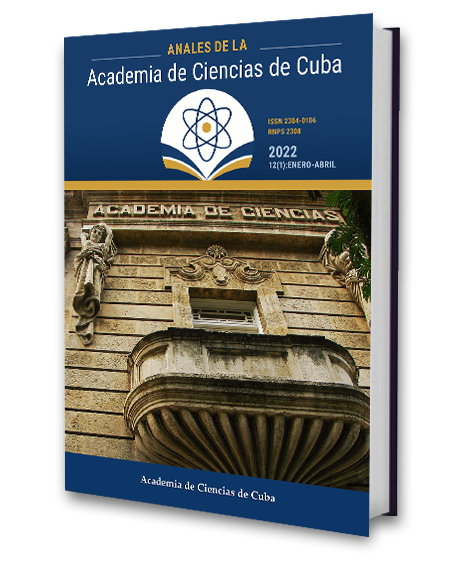Nanoparticles of clays and ceramics for a fast microbiological diagnosis
Keywords:
microbiological diagnosis, nanoparticles, clays, ceramics, zeolitesAbstract
Introduction. The aim of the research was to use nanoparticles of clays, calcium phosphate salts and ceramics, combined with fluorogenic and chromogenic substrates to significantly shorten the period of microbiological diagnosis. Methods. Combinations of nutritional bases, co-enzymes, co-factors that accelerate microbial development and metabolism were selected. These components were coupled with nanoparticles and fluorogenic and chromogenic substrates to obtain different nanocomposites. Nanoparticles and nanocomposites were characterized according to their composition, structure and functionality both with isolated strains of microorganisms, and in clinical samples, water, among others. Results. Nanoparticles and aggregates of halosites, bentonites, siliceous earth, hydroxyapatites, calcium phosphates and zeolites showed high surface / volume ratio, porosity and surface roughness, with particle and pore sizes in the nanometric order. Protein extracts and hydrolysates were combined with a set of salts and co-enzymes that enabled rapid cell multiplication and the synthesis of microbial enzymes detected in just minutes by the degradation of a combination of fluorogenic and chromogenic substrates. The nanoparticles and aggregates were coupled with the other components obtaining different structures that allowed for reducing the incubation time for detection, identification, isolation and counting to a minimum of 10 to 60 min in direct samples. As a conclusion, a rapid diagnosis platform for microorganisms was achieved using nanoparticles and aggregates of clays and ceramics coupled with substrates that reveal enzymatic activity in only minutes.Downloads
Published
How to Cite
Issue
Section
License
The journal Anales de la Academia de Ciencias de Cuba protects copyright, and operates with a Creative Commons License 4.0 (Creative Commons Attribution-NonCommercial License 4.0). By publishing in it, authors allow themselves to copy, reproduce, distribute, publicly communicate their work and generate derivative works, as long as the original author is cited and acknowledged. They do not allow, however, the use of the original work for commercial or lucrative purposes.
The authors authorize the publication of their writings, retaining the authorship rights, and assigning and transferring to the magazine all the rights protected by the intellectual property laws that govern in Cuba, which imply editing to disseminate the work.
Authors may establish additional agreements for the non-exclusive distribution of the version of the work published in the journal (for example, placing it in an institutional repository or publishing it in a book), with recognition of having been first published in this journal.
To learn more, see https://creativecommons.org






